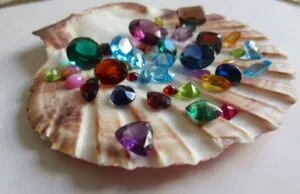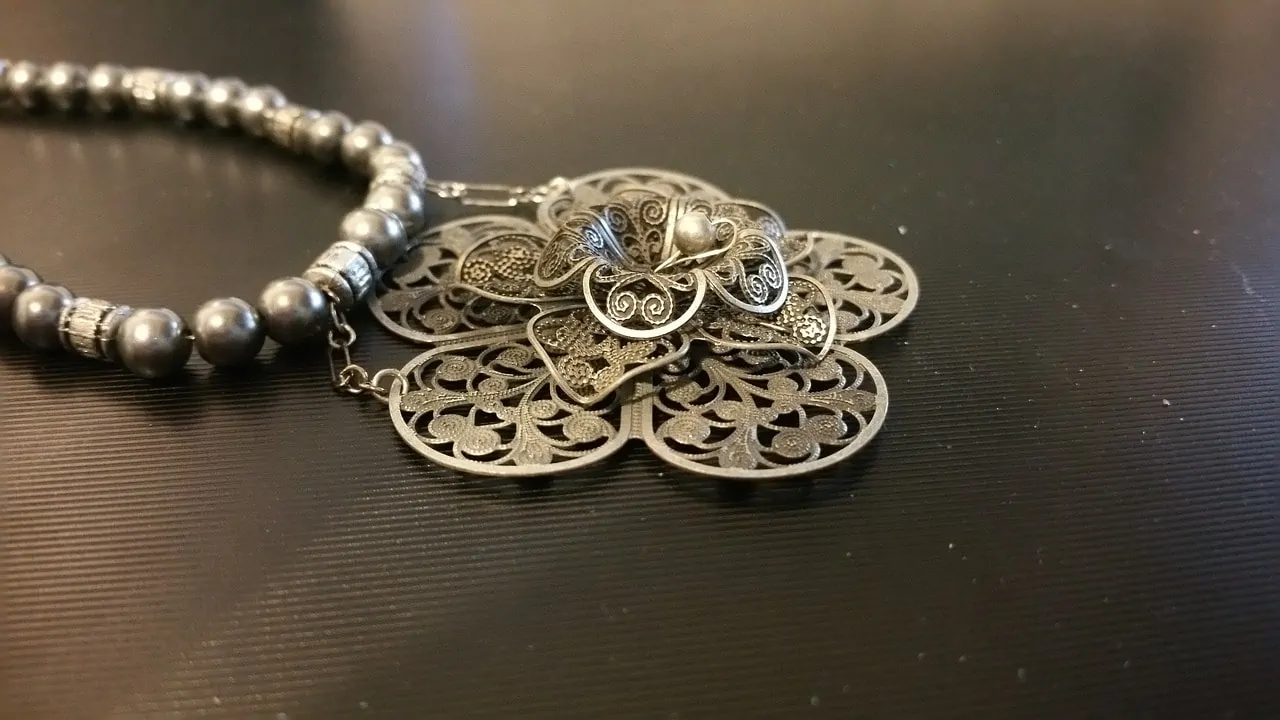
Table of Contents
Pewter, although frequently overlooked, ranks as the fourth most popular metal in the global jewelry market. More than just tin, pewter stands out as an exceptional material, offering unique features that surpass its affordability.
Let’s explore everything there is to know about pewter jewelry including its origin, history, and significance across the world.
What is Pewter?
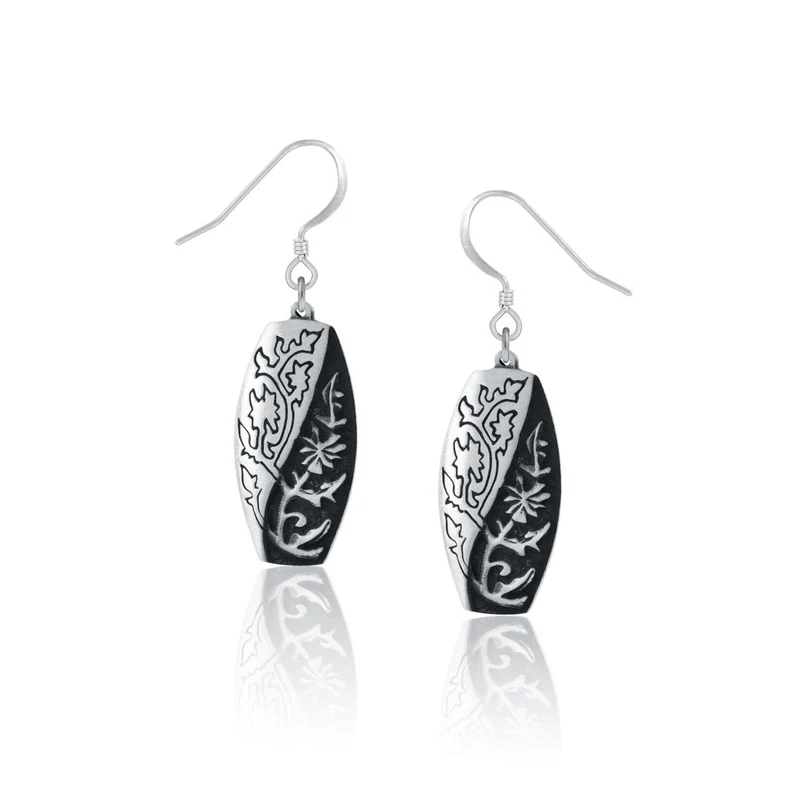
Pewter, widely used in jewelry, mainly consists of tin, making up about 90% of its composition. It also includes small amounts of metals like copper and antimony, and modern varieties often exclude lead for safety. These additions make pewter both easy to shape and strong, perfect for detailed jewelry designs.
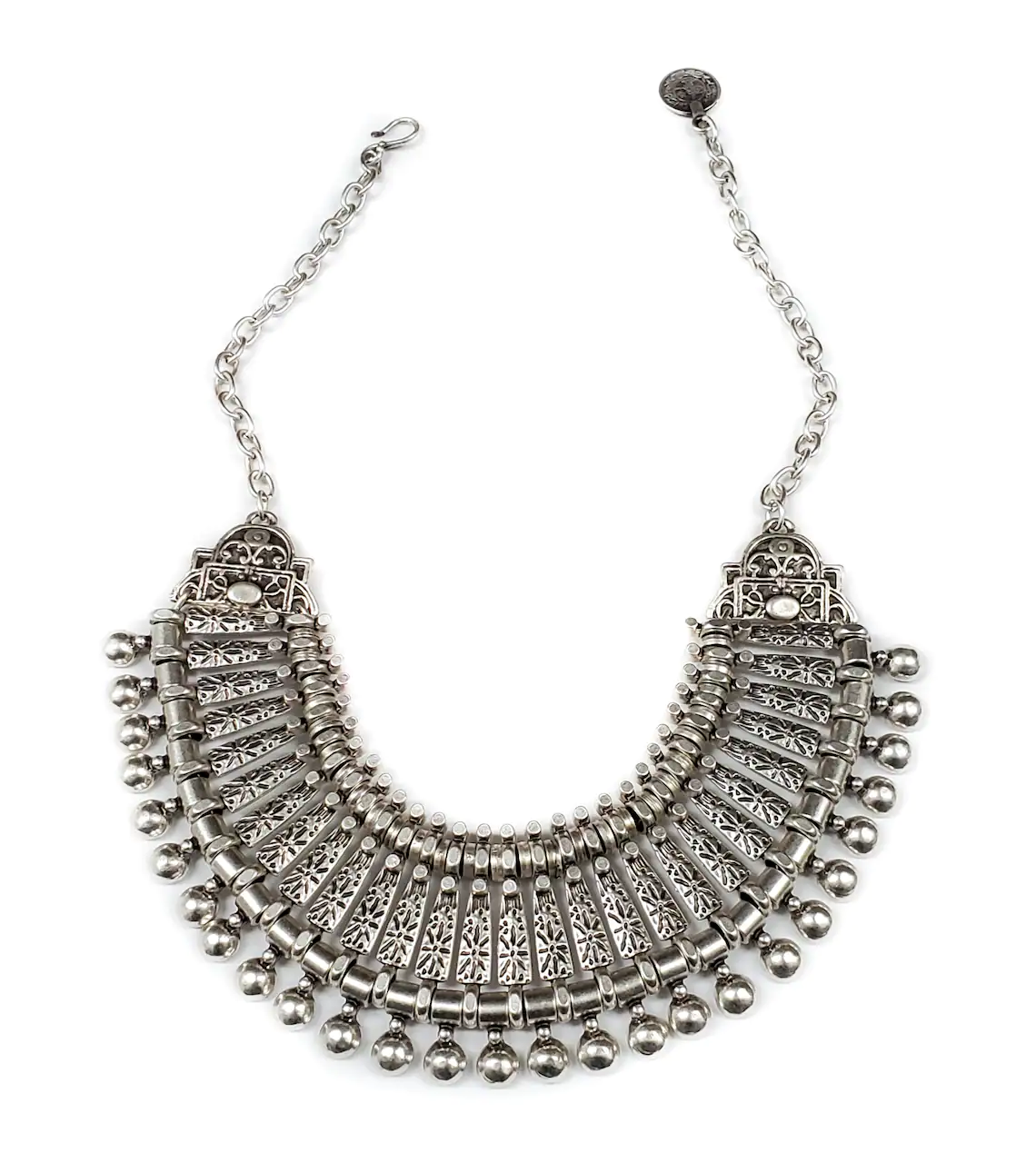
Pewter’s charm comes from its distinct look. It has a soft, silvery-gray color that can be either shiny or have an antique feel. This range in style suits many types of jewelry, from modern to vintage. Pewter doesn’t tarnish easily, so it stays shiny with little care, ideal for daily wear.
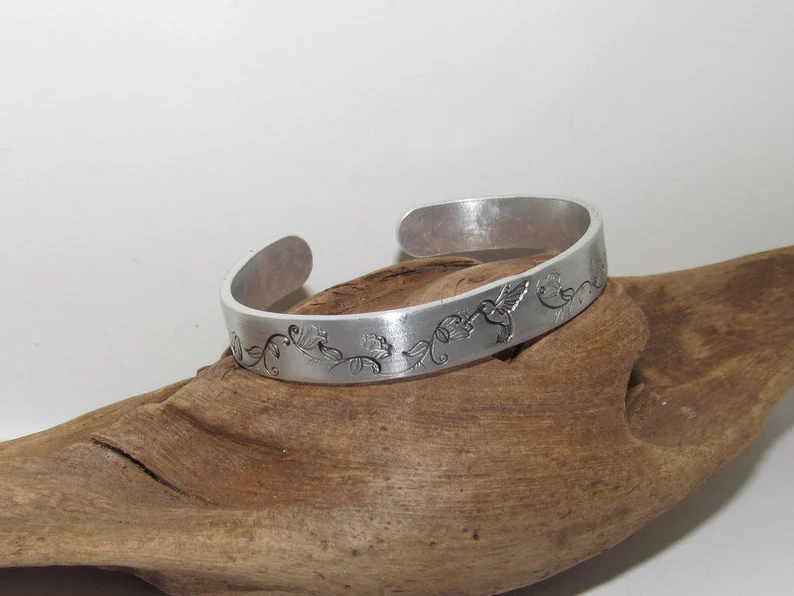
Pewter is also hypoallergenic, making it a great option for those allergic to metals like nickel. It’s affordable, offering the elegance of expensive metals without the high price. Being lightweight, pewter is suitable for big, bold jewelry pieces that would be too heavy in other metals. Pewter’s combination of attractiveness, practicality, and cost-effectiveness makes it a standout choice in jewelry materials.
Origin and History of Pewter Jewelry
Pewter, with its deep history, has played a crucial role since the Bronze Age. Ancient civilizations like the Egyptians, Celts, Romans, and those in the Middle East and Far East widely used it. Its common ingredients and low melting point made it easy to work with from early on.
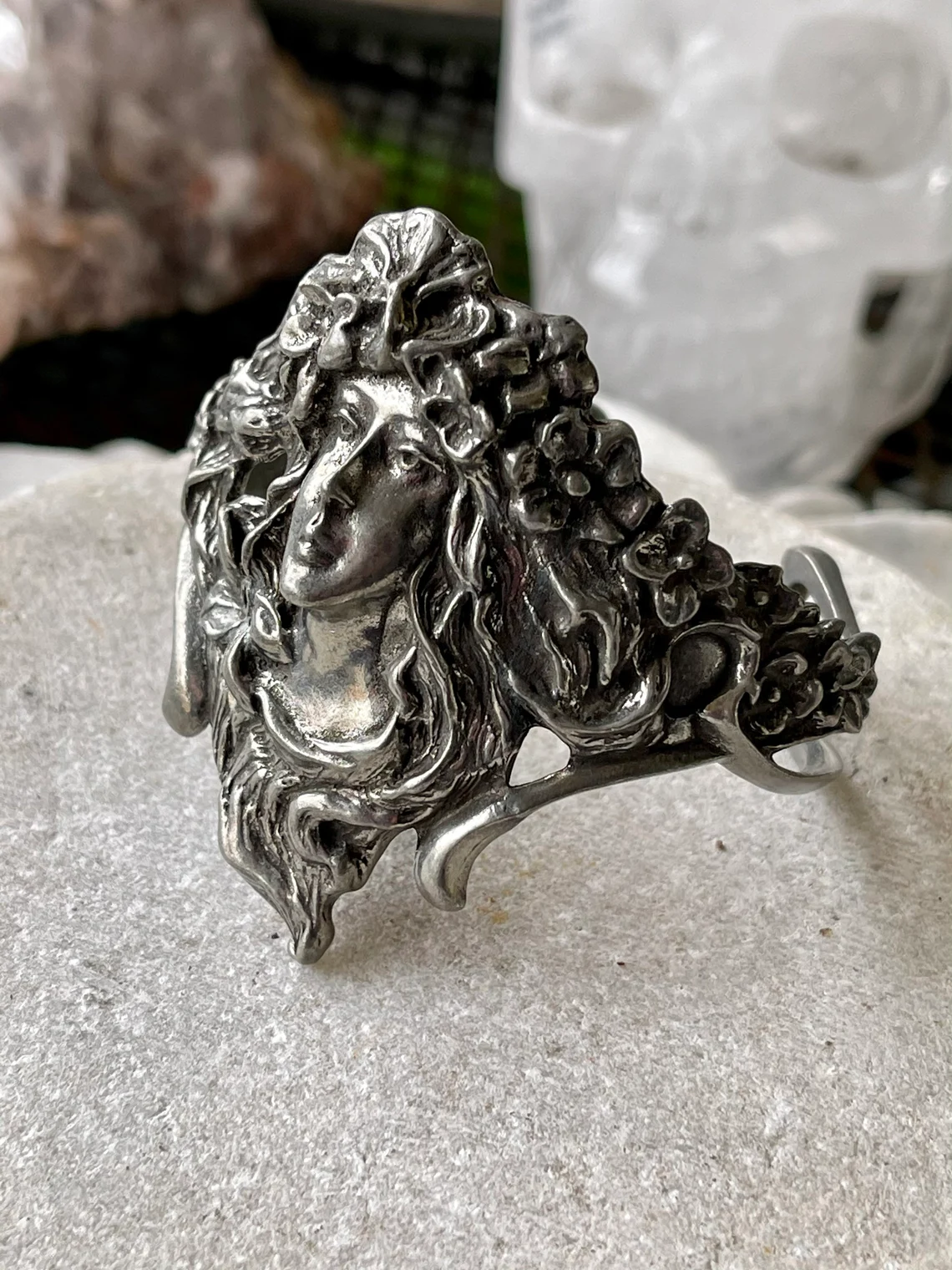
We talk about the Stone Age, Bronze Age, and Iron Age, but not the “Pewter Age.” This is because pewter is too soft to make weapons and tools, the usual markers of these historical periods. Despite this, pewter has been vital in human history.
Its main use wasn’t in weapons but in everyday items. Before porcelain became popular, pewter was the go-to material for many household objects. It was ideal for making utensils, plates, containers, mugs, tankards, candlesticks, and decorative items. Its versatility and practicality made it a favorite for these purposes.
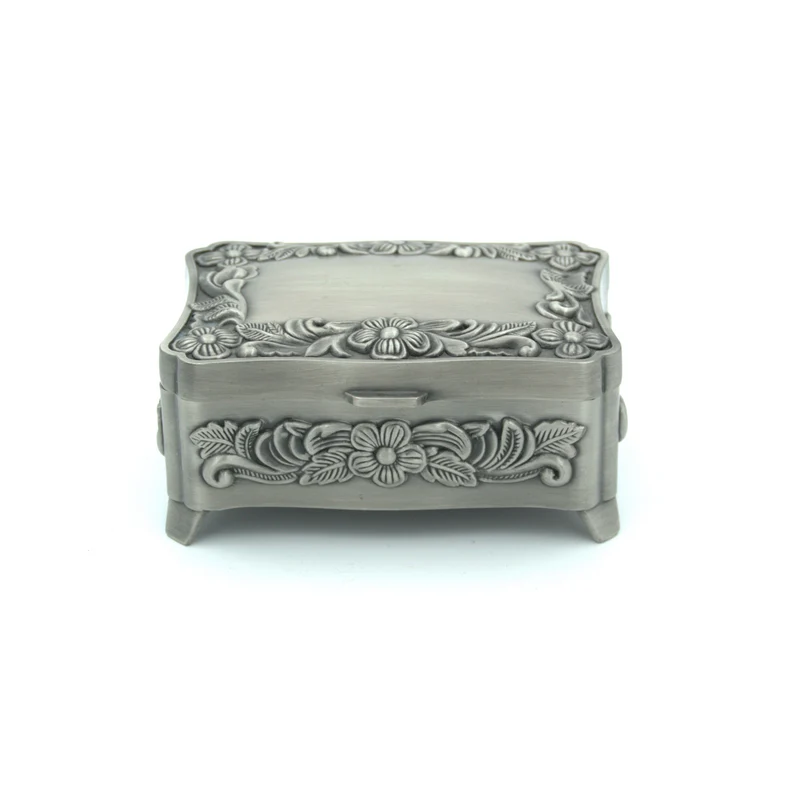
Pewter has also been important in jewelry for a long time. Its softness makes it perfect for creating detailed and intricate designs. For thousands of years, pewter jewelry has adapted to various styles, thanks to its ability to take on different finishes, from shiny to antique.
So, while pewter doesn’t define historical eras like other metals, its role in human history, especially in making household items and jewelry, is significant. This long-lasting metal has held an important place in the story of human progress and craftsmanship.
Types of Pewter Jewelry
Pewter jewelry, with its unique shine and flexibility, suits various styles and preferences, falling mainly into traditional, contemporary, and artisanal categories.
1. Traditional Pewter Jewelry
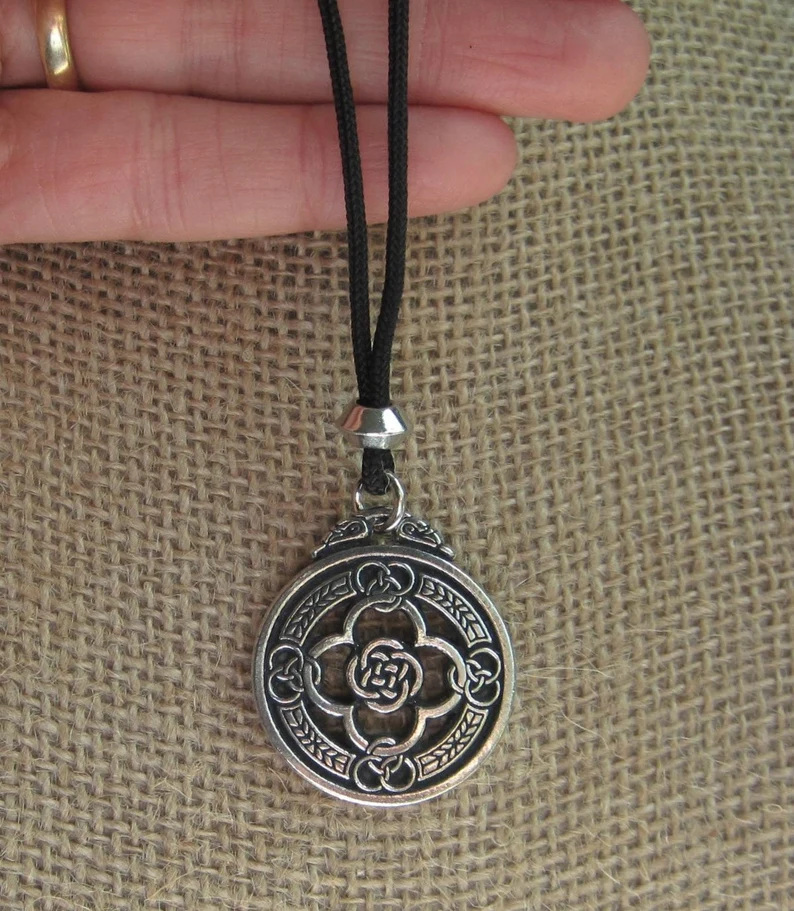
This type involves classic designs, lasting through many years. Celtic designs are popular here, known for their complex knotwork and deep meanings. Examples include Celtic rings, pendants, and brooches with patterns like the triskelion or Claddagh.
Another frequent style imitates historical pieces, like brooches and pins from medieval or Renaissance times, featuring detailed designs and often mimicking historical artifacts.
2. Contemporary Pewter Jewelry
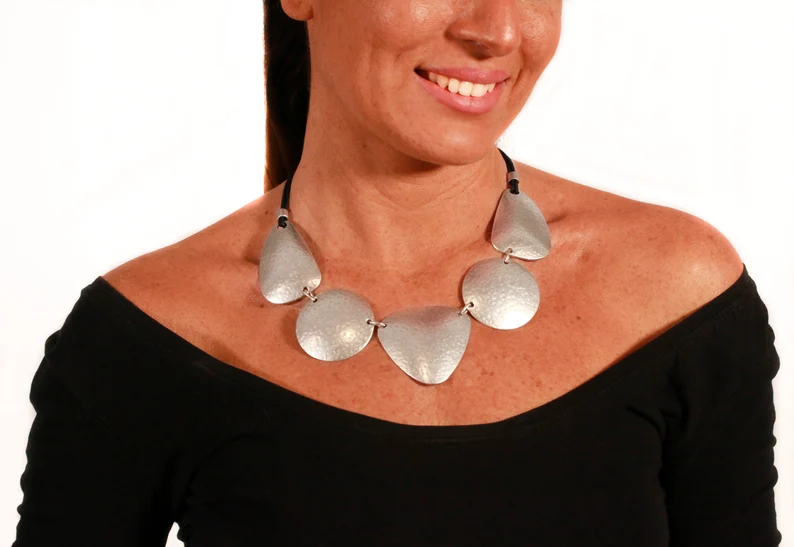
This kind breaks new ground in design and style. Marked by modern, simple designs with clean shapes and polished finishes, it often blends materials like glass, enamel, or semi-precious stones, adding varied textures and colors.
Designers play with abstract forms, uneven patterns, and unique textures, making each piece stand out. Contemporary pewter jewelry includes necklaces with geometric designs, smooth cuff bracelets, and earrings with a modern twist.
3. Artisanal Pewter Jewelry
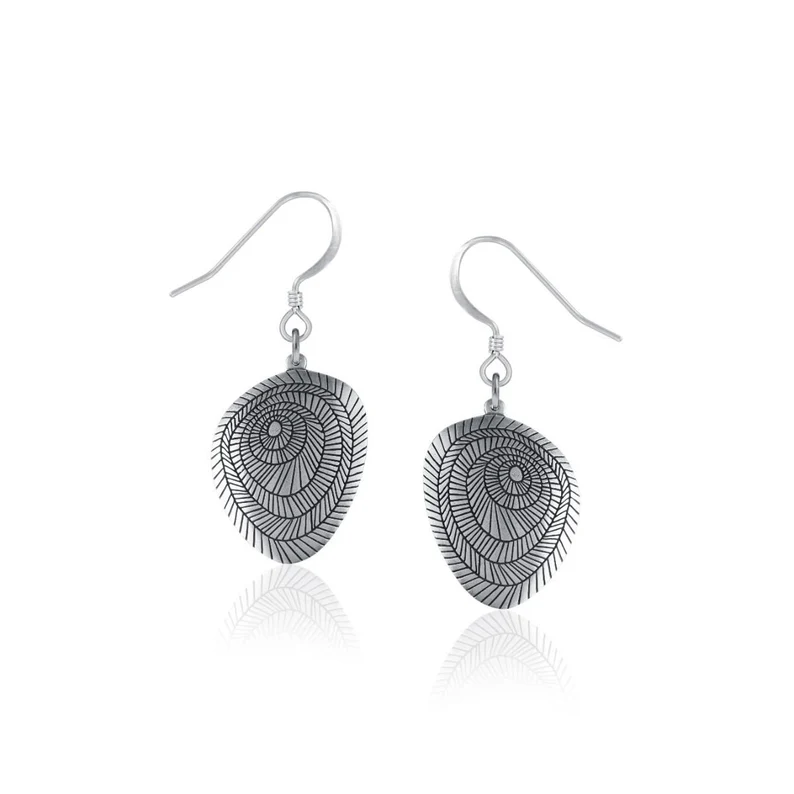
These handmade pieces show unique features that mirror the artisan’s style and skills. Ranging from highly decorated to plain and simple, these items often feature custom designs, personal engravings, and detailed motifs.
Artisans might use age-old crafting methods, adding a historic feel to each piece. Some examples include hand-hammered bangles, personalized pendants, and earrings with intricate craftsmanship.
Vintage Pewter Jewelry
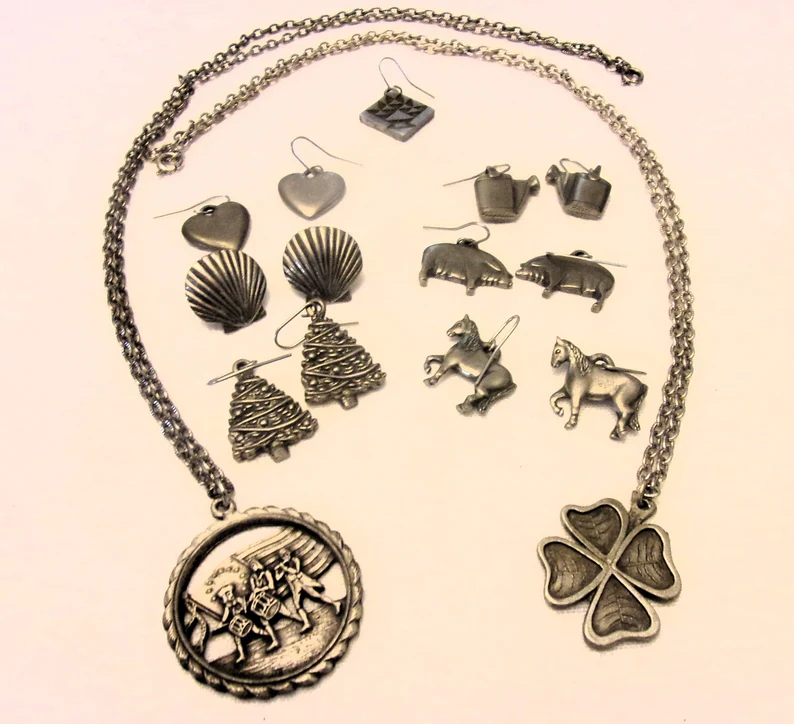
It’s not uncommon to find pewter jewelry from centuries ago if you look for it in auction houses or online. Especially in the 19th century, pewter made somewhat of a comeback when certain medieval items and jewelry designs came back into fashion.
Such vintage pewter items can fetch a good price nowadays because of their historical value and often gorgeous designs. Do be careful when purchasing vintage pewter jewelry or items of any kind, however, as many pewter alloys used to include some lead in them before people learned how dangerous lead can be for our health.
Another note would be to watch out for fake vintage pewter items – the fact of the matter is that new pewter jewelry designs are often given an old or vintage appearance on purpose because it looks good. Unfortunately, that also makes it easier to sell to unsuspecting buyers as “vintage” and therefore at a higher price.
Pewter Jewelry Value
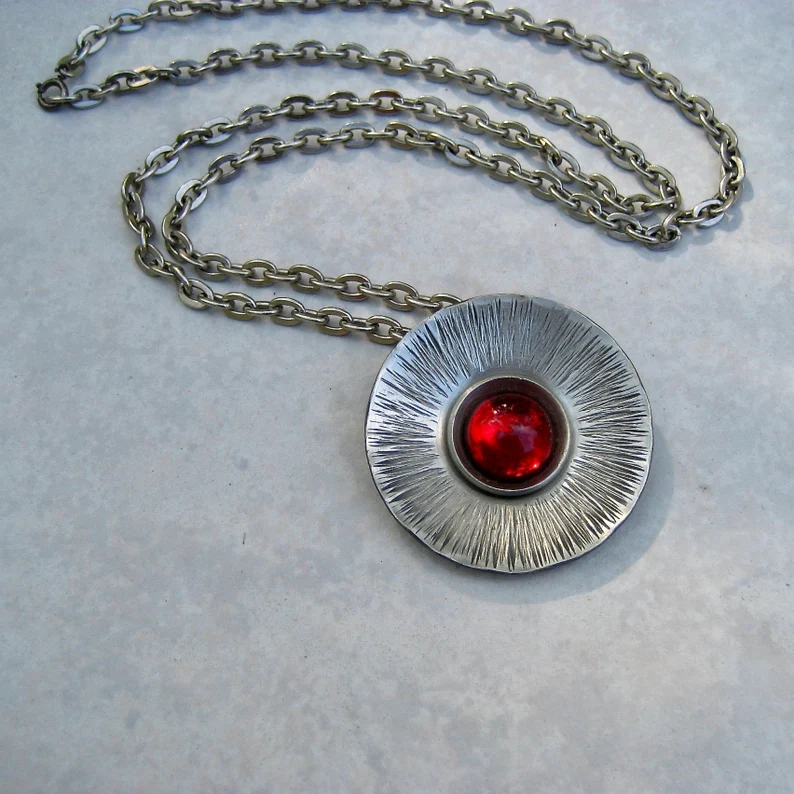
Pewter jewelry’s value comes from its beauty, practical benefits, and rich history. Pewter, resembling silver, shines softly but is much more affordable. This makes it popular among those who want elegant metal jewelry without the high cost of precious metals. Its ability to adapt to various styles, from detailed traditional patterns to clean modern designs, appeals to many fashion preferences.
Pewter’s durability and tarnish resistance add to its practical worth. Jewelry made from pewter stays beautiful for a long time with little care, making it a good choice for both daily wear and special events. It’s also great for people with sensitive skin, as it’s usually free from common irritants like nickel.
The historical importance of pewter adds to its value too. Its long history, tracing back to ancient times, gives pewter jewelry a timeless feel and a connection to the past. Every piece, whether a copy of an ancient artifact or a new design influenced by old craftsmanship, tells a story.
Pewter jewelry, therefore, is a blend of attractiveness, practicality, and historical depth, making it a valued and loved option in jewelry.
Pros and Cons of Pewter in Jewelry
Now that we know what exactly pewter is, let’s take a look at the pros and cons of it to hep you decide if pewter jewelry is for you:
Pros:
- As an alloy of tin, copper, and antimony, pewter is very affordable – both the alloy itself and the jewelry made out of it.
- Pewter is hypoallergenic – modern pewter contains no nickel or lead so it’s unlikely to trigger skin allergies or irritations.
- It has a low melting point (295oC or 563oF) which makes it even easier and more affordable to produce – that’s a great boon for both large-scale and smaller jewelry producers, as the energy costs you’d save alone are significant.
- It’s malleable which allows for easy and highly detailed and gorgeous jewelry embellishments. Simple silicone rubber molds are often all that’s needed to make exceptionally beautiful pieces.
- Pewter looks just as good as sterling silver but doesn’t tarnish, so, it retains those good looks even longer.
- Because it looks very much like sterling silver, jewelry pieces made using both sterling silver and pewter are becoming more popular – the silver is often used for necklace chains, cufflink fittings, or earring hooks (which need to be durable) and pewter is used for the earrings and pendants themselves (which means they won’t tarnish).
- Because of its excellent qualities and low price, pewter can also be used as the base for many gold-filled pieces of jewelry or other types of platings with precious metals.
- While the metal itself doesn’t have high monetary value, you’ll find that pewter jewelry pieces are often highly prized for their craftsmanship and artistic value. Because of this alloy’s great qualities, it’s often used to display the artistic qualities of the jeweler.
- Pewter can also be used for electroplating or electroforming – some jewelers often electroplate pewter to give certain pieces a silver-like look for a fraction of the cost and with no risk of tarnishing. This is so easy to do with a simple electroforming kit that everyone can try it at home.
Cons:
- Because of how soft it is, pewter can get bent or broken easily so you need to be careful with it – that’s why it’s preferred for ornamentation pieces or jewelry that you don’t wear too often.
- That softness also makes pewter ill-suited for rings – it’s primarily used for necklaces, pendants, earrings, and costume jewelry.
- Due to the low value of the metals in its alloy, pewter itself isn’t seen as a valuable jewelry metal – so, this type of jewelry just doesn’t and can’t ever have the same type of prestige and monetary value as gold, platinum, or even silver.
Because of the low value of the pewter alloy, whatever value pewter jewelry has, usually comes from the intricacy and beauty of its design and/or from its historical significance, in the case of vintage pewter. Plus, sentimental value is also a thing when it comes to hereditary jewelry.
This is great, on one hand, because it makes pewter jewelry very affordable. It also allows jewelers to set the price almost entirely based on the craftsmanship that went into the production of the jewelry design. Yet, it also means that pewter value is effectively capped to just that and it can never be as high as that of a similarly-designed jewelry piece made of a precious metal.
Wrapping Up
All things considered, pewter can easily be called one of the most underappreciated jewelry metals as far as consumers are concerned. For a lot of us, this is a throwaway “filler” metal that’s seen as a knockoff or an imitation of silver.
Jewelers know better, however, which is why pewter is so commonly used. This fantastic alloy is not only affordable but also malleable, tarnish-resistant, with a low melting point, as well as very beautiful.







